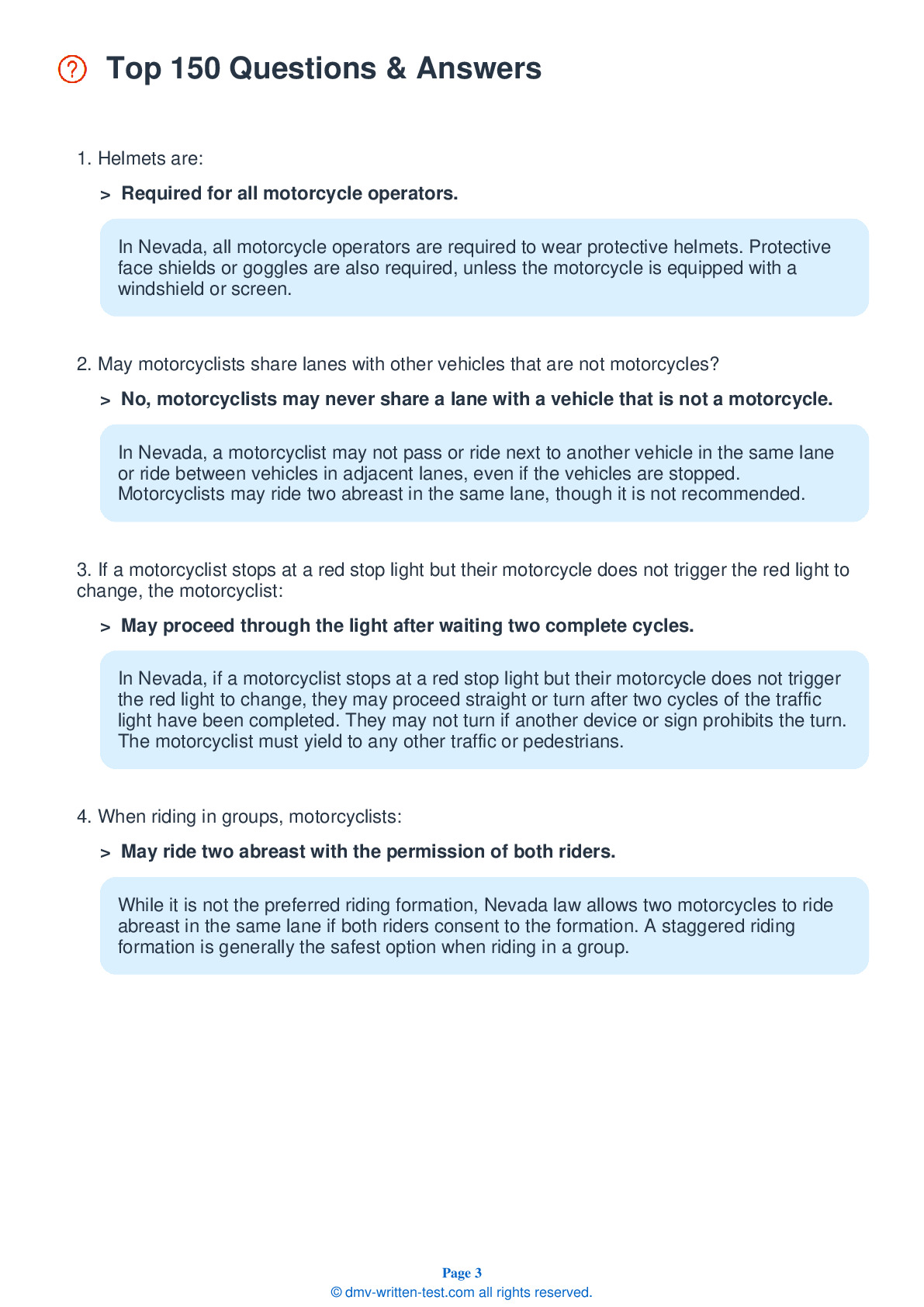2025 Nevada Motorcycle Permit Test 16
The following questions are from real DMV written motorcycle permit tests. These are some of the actual permit questions you will face in Nevada when getting your motorcycle learners permit. Each motorcycle theory practice test question has three answer choices. Select one answer for each question and select "grade this section." You can find this button at the bottom of the drivers license quiz. For a complete list of questions and answers for Nevada please visit https://cheat-sheets.dmv-written-test.com/en/nevada/motorcycle.
Number of Tests
Number of Question
Passing Score
19. A helmeted rider is _______ more likely to survive a crash than a rider not wearing a helmet.
Explanation
No matter the speed, riders who are not wearing helmets are three times more likely to die from head injuries than riders who are wearing helmets at the time of a crash.
20. A passenger on a motorcycle should:
Explanation
Passengers should get on a motorcycle only after the engine has been started and the transmission is put in neutral. They should sit as far forward as possible without hindering the operator's control of the motorcycle and should hold onto the operator's waist, hips, or belt.
21. When riding, you should:
Explanation
Always look through turns to where you want to go, turning only your head and not your shoulders. Your arms should be slightly bent when holding the handgrips and you should keep your knees against the gas tank to help maintain your balance. Actively search for hazards on the road ahead, but also behind and to the sides of your motorcycle.
22. When riding, you should:
Explanation
When making a turn, you should look through the turn to where you want to go. Turn just your head, not your shoulders, and keep your eyes level with the horizon.
23. An approved helmet:
Explanation
Any approved helmet will allow a rider to see as far to the sides as is necessary for safe riding. Approved helmets will have labels and markings providing the manufacturer's name, relevant information and instructions, and information about the standards the helmet meets.
24. When both braking and swerving must be done to avoid an unexpected hazard, a rider should:
Explanation
Because you need adequate traction to swerve safely, you should not brake and swerve at the same time. Instead, if you approach a hazard that requires you to brake and swerve, you should perform one action and then the other.
25. Do all of the following when riding at night, except:
Explanation




